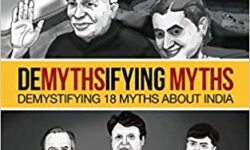Sudipta Roy, an emerging novelist, brings back the concept of an ideal narrative – an analysis
Many authors have emerged in India and many have ripped the rewards of their very first books. Getting into the details might not be necessary as we are here to learn about a new author, a novelist who is emerging with his splendid narrative and his debut novel has made certain fans. I will mainly focus on the writing style, philosophy, narrative and the art of fiction that distinguishes him from the rest of the contemporary novelists in India or, at least, puts him on a different pedestal among the Indian authors who are looking to make space for themselves. For the book review of his debut novel, A Dumb’s Story, you can visit platforms like Indian Book Critics or Literature News or The Last Critic.
Style: Sudipta Roy has begun his story with an ordinary set-up depicting an extraordinary young man braving the challenges of life and excelling at every front securing a good job for himself, making wealth, friends, luxuries and also a girlfriend. However, one bad habit brings him down to nothing as cancer gets his tongue and he is rendered dumb… a critical reader can observe a pattern in the writing. And then, starting with rising and continuing in a fall, the protagonist rises again to do something for others rather than himself. So, a traditional style and equipped with modern linguistics usage will help modern readers to stay connected with the storyline. The author has tried his best to stay in the loop with word selections, sentence formation and length of the chapters. However, at times, the length parameter does get out of sync and readers might feel otherwise. The author is not looking for a readers’ version of the novel and conclusion and he has gone with his artistic intuition and I feel he has been able to add more value by doing so.
Thoughts and Philosophy: Once you read his very first novel, you will feel that the novelist has tried to offer something new, even though it’s traditional. The names of the characters, the names of places, the chapters and major episodes… everything suggests something. Readers will not only like but also admire the philosophy once they connect with it. It is not new in Indian English writing, I must say. However, it is rather rare in modern Indian English fiction and the author has to be admired that he could come up with such thoughts and still manage to keep his storyline very close to youthful ambitions and ideas. A social worker, a politician, a reformer… the multiple facets in the personality of Nairit, the protagonist, also depicts the vivid thought lines that Sudipta can continue in one single fiction and yet not lose a bit… well-done!
Expectations & Future: Into the future, I do fancy this author bringing more delight and entertainment to the readers of serious fiction. Yes, I believe that authors like Sudipta produce serious fiction and they can still manage to bring modern and traditional, casual and alert and all the binary opposite class or cluster of readers together. He has been able to manage many things in the novel that come together to create the ideal fiction and make an impact upon the readers that’s useful, entertaining and also furthering… anyone who reads this novel will ask, answer and discuss…
All the best to the readers and the author as well!
Ashish for The Book Blog
